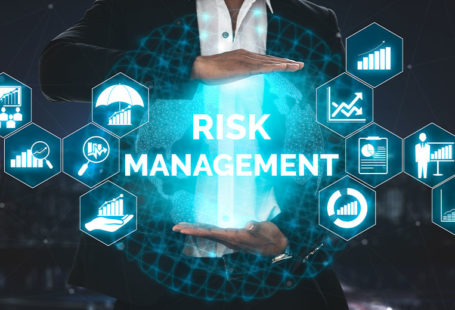
RPA is a type of technology that automates business activities by using business logic and structured inputs. A corporation can use RPA tools to set up software, or a “robot,” to record and interpret applications for things like processing transactions, modifying data, triggering replies, and interfacing with other digital systems. RPA scenarios may be as basic as sending an automated email response to as complex as installing hundreds of bots to automate operations in an ERP system.
Although the possibilities are limitless while using RPA, the success of scaling up RPA business is dependent on proper Governance; which establishes adequate advice, procedures, and mechanisms to monitor and regulate RPA operations and achieve the promised advantages from the technology.
If the plan is to implement RPA as a long-term initiative, it is important to consider how automation and its governance fits in the organizational, digital, and IT roadmap. RPA governance being the key.
Some of the components of RPA Governance Framework are:
- Clear Organisational authority and responsibility
- Vision, Road map and strategy
- Clear Plan and project plan
- Policy and processes
- Project governance and management
- IT architecture alignment
- Third party vendor management
- Cyber and privacy Security by design:
- Compliance to regulation
A robust governance framework allows the company to achieve business vision, ensure holistic and profitable business objective achievement , keeping control to prevent and detect errors and ensuring compliance .
Need of RPA Governance:
Without a proper governance and oversight of a structured RPA program in an organization, implementing bots can be risky as it can lead to creation of process environments which are hard to manage.
First step to RPA success is to have committed Stakeholder with adequate role ,responsibility with decision making authority for governing RPA initiative
Responsibilities of the governance function will be to:
- Ensure we have clear RPA vision, RPA initiative aligned with business objective and strategy.
- RPA strategy is as per business plan.
- Budget are adequately provisioned for RPA
- Help identify, validate and prioritize appropriate candidate processes suitable for automation
- Tool selected are aligned as oer current and future IT architecture.
- Select and deploy RPA implementation resources, including vendor partner
- Ensure consistency through coordinating otherwise disparate RPA initiatives
- Ensure adequate skill are available, developed and retained.
- Leverage and share knowledge to avoid unnecessary duplication and redundancy.
- Set policies for security to describe the roles and responsibilities of the automation process and the methods, standards, and guides to follow.
Challenges of RPA Governance:
Implementing RPA is an initiative, not a series of stand-alone projects. Hence, RPA Governance also comes with some challenges on implementation in the working environment:
- Lack of adequate skill set for implementation of RPA
- Resistance from the employee on application of new process.
- Inability to automate end-to-end workflow.
- Technical and operational issues.
- Communication gap between application owners and insufficient assistance.
- Change resistance from external parties
- Multiple and dynamic Compliance requirement
What can be done?
Maintaining a dedicated internal delivery team is critical from long term perspective. Its responsibilities would vary depending on the company goals, organizational dynamics, and expertise available. Their main role would be to drive the automation initiative and establish an Automation Centre Of Excellence (COE).
A specialised cross-functional team responsible for discovering and delivering automated processes across the company is known as an RPA Centre of Excellence. CoE’s bring together and coordinate automation activities throughout an organisation, ensuring that the RPA programme achieves its goals. They accomplish this by obtaining, analysing, and managing the knowledge and skills required to properly apply RPA. CoE’s also give training and develop best practises, disseminating this knowledge throughout the organisation to guarantee that all automations are driving critical business objectives. They help organization to ensure followings
- Alignment with vision and purpose
- Adequate planning and Budgeting
- Appropriate Selection of tools and vendors
- Managing Cyber security and Privacy risk
- Regular monitoring and reporting
Focus points for an RPA CoE:
- Drive process automation across the enterprise, upskilling teams and increasing awareness of RPA across business units.
- Evaluate quality of the developed automations and how critical these are, ensuring that best practice and standards are applied.
- Monitor how software robots are performing and guarantee that execution Service Level Agreements (SLAs) are met.
- Follow and report the main development stages of the RPA initiative.
- Must guarantee the execution of established governance guidelines, frameworks, and processes across the enterprise.
- Guarantee the continual improvement of automations and tools.
Summary:
Implementation of RPA should be seen as a journey. Effective RPA Governance is imperative for success of business objective through RPA implementation. Since many factors ranging from People, financial, operation, regulatory, contractual compliance, cyber and privacy comes into play while developing RPA bots, hence setting a proper governance framework should be the first priority on starting the RPA journey.
Coauthor: Chiranjeet Barkakoti


